What drives uncertain climate hazard?
Lecture
2023-08-23
What questions will we answer?
Today
What questions will we answer?
Case study: storm surge
Wrapping up
Sizing a stormwater pipe
- Rainfall-runoff model
- e.g., peak flow from rational method: \(Q = CiA\)
- \(i\) is rainfall intensity, \(A\) is area, and \(C\) is runoff coefficient
- Design rainfall based on return period \(T\)
- \(p(i > i^*) = 1/T\)
- Size your culvert to handle \(Q^* = Ci^*A\)
- Requires knowing \(p(i)\)!

Floodplain mapping in a riverine system
- Analyze historical streamflow data at a gauge
- Take the 99th percentile (100 year return level) of annual maximum streamflows
- Use a hydraulic model to model where the water goes

Reservoir sizing (simplest version)
- Consider \(N\) years of inflows (and releases, evaporation, etc)
- Count number of times reservoir is empty (“failure”)
- Repeat experiment many different times with different inflows
- If you are sampling this from \(p(\text{inflow})\), you can estimate the reliability
- Monte Carlo method
- Why not just use observed inflows?
Index insurance pricing
- Index insurance: if some index \(I\) is above a threshold \(I^*\), pay out \(X\)
- Total rainfall in a season, area flooded, etc
- Let \(p^* = p(I > I^*)\) is the probability of a payout
- Naive pricing: \(R = p^* X\)
- Risk premium: \(R = X \left( \mathbb{E}[p^*] + \lambda \mathbb{V}^{1/2}[p^*] \right)\)
Other examples
- Seasonal electricity resource adequacy (Doss-Gollin et al., 2021)
- Levee design (Garner & Keller, 2018)
- Water supply planning (Fletcher et al., 2019)
- Multihazard design (Bruneau et al., 2017)
- etc…
Important note
All of these workflows are slightly simplified, but communicate the main idea. For each of these motivating problems, we need to know the probability distribution of some hazard – \(p(\bf{s})\) to use our notation from last class
Case study: storm surge
Today
What questions will we answer?
Case study: storm surge
Wrapping up
Storms on the North Sea
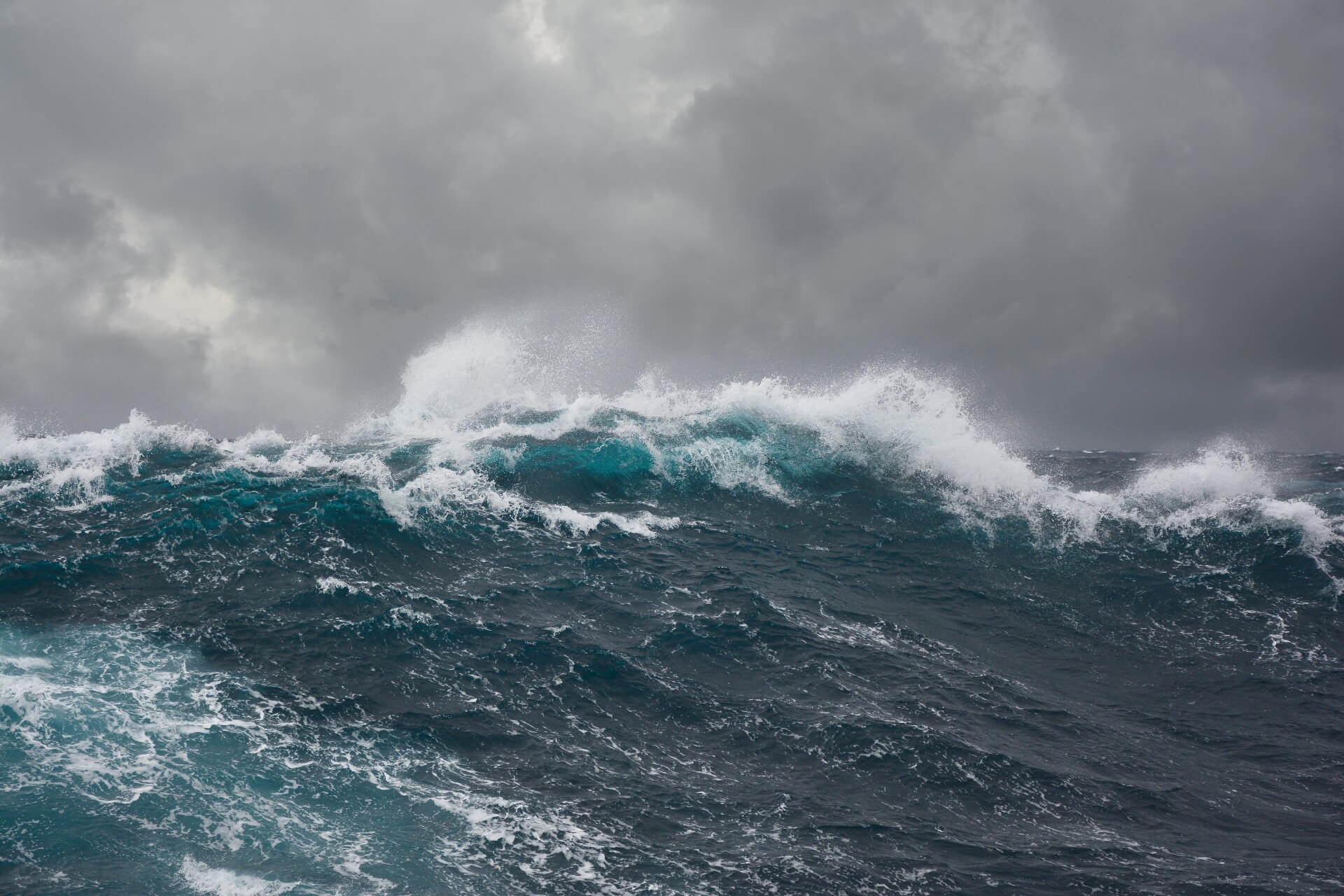
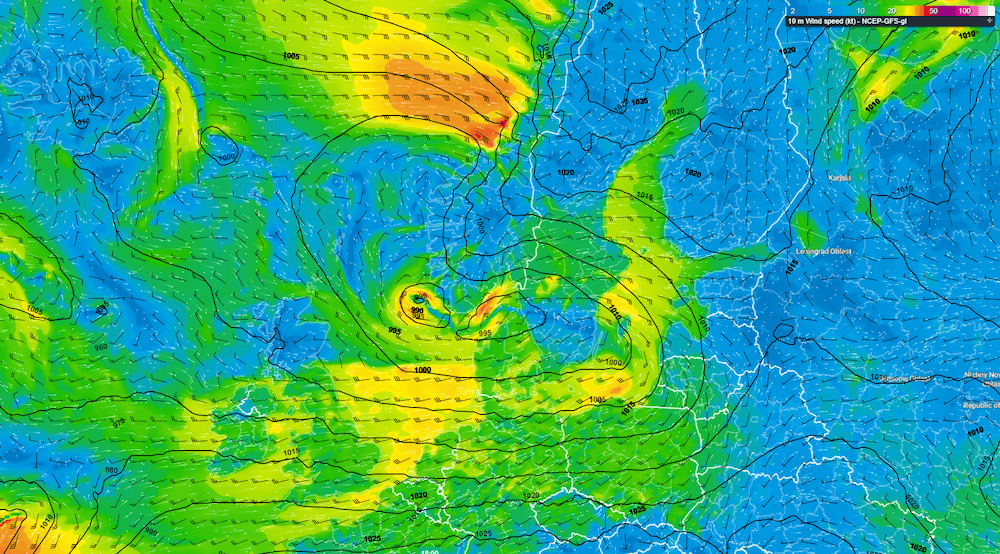
Storm surge in Houston
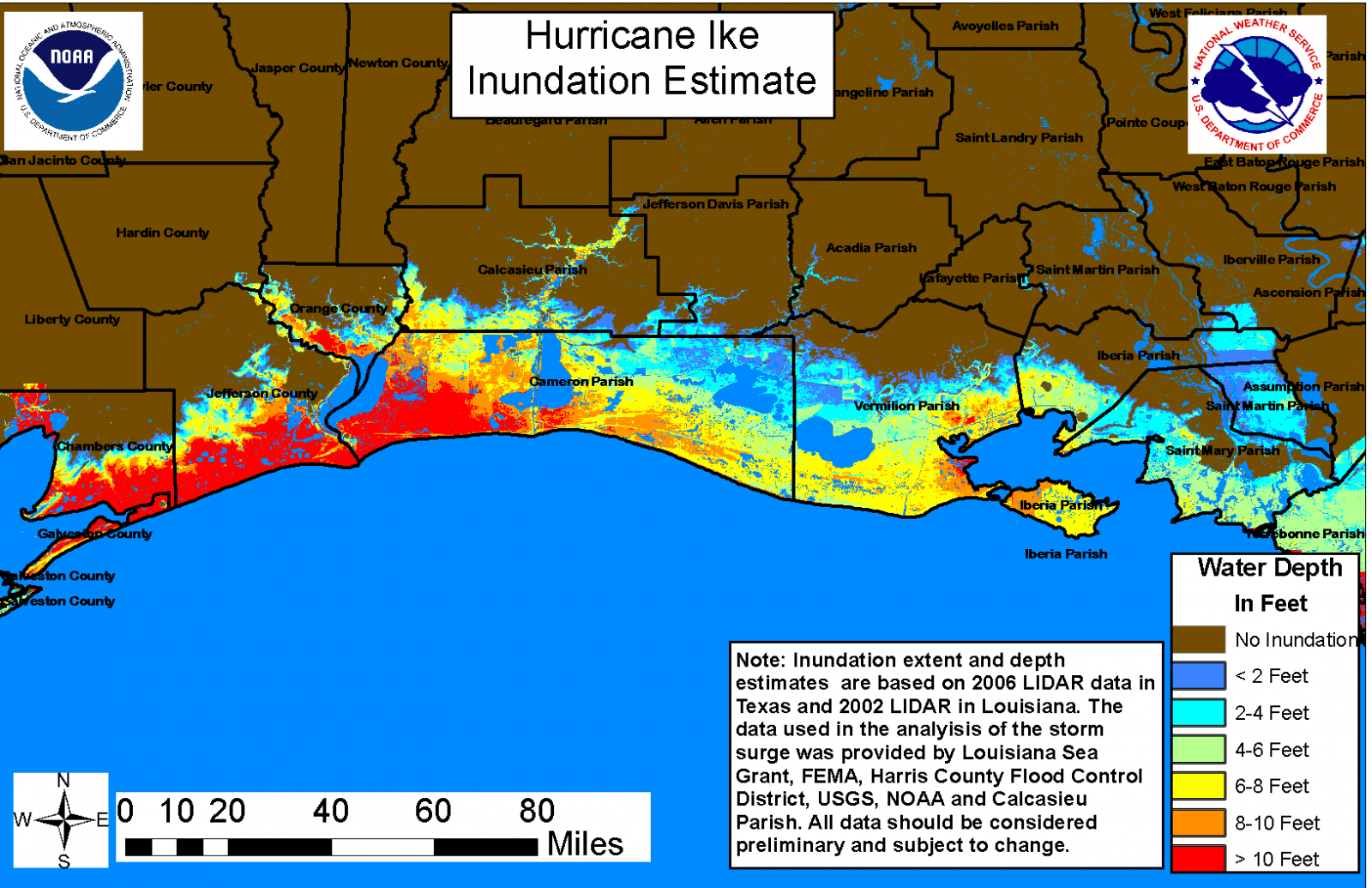

Problem statement:
You are designing a storm surge barrier on Galveston Bay. What is the probability distribution of storm surge at your location?
This knowledge will help you trade off the cost of the barrier against the residual risk of flooding.
What do we need to know?
Take a moment, write, and then share
Historical data
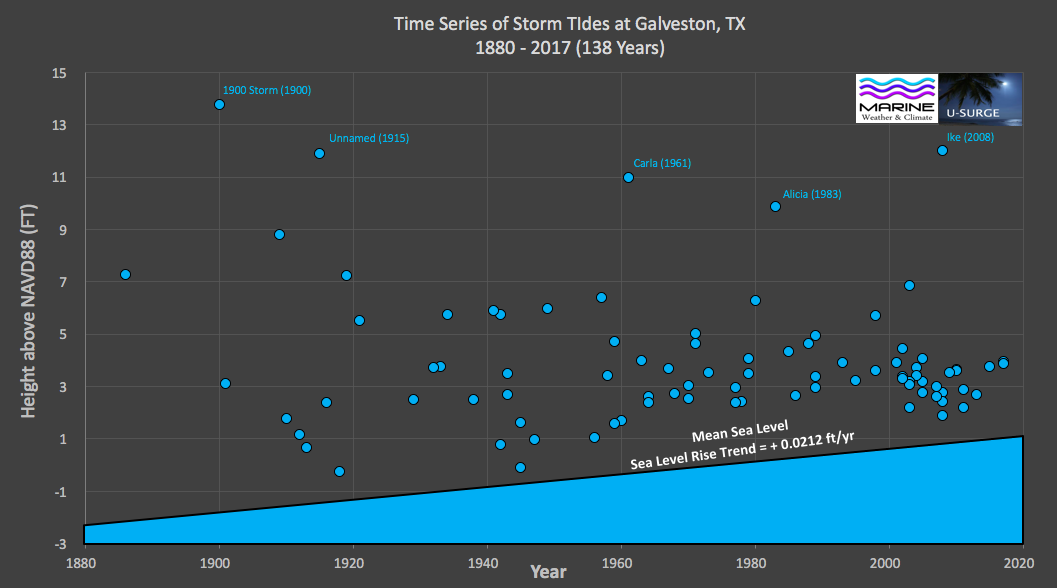
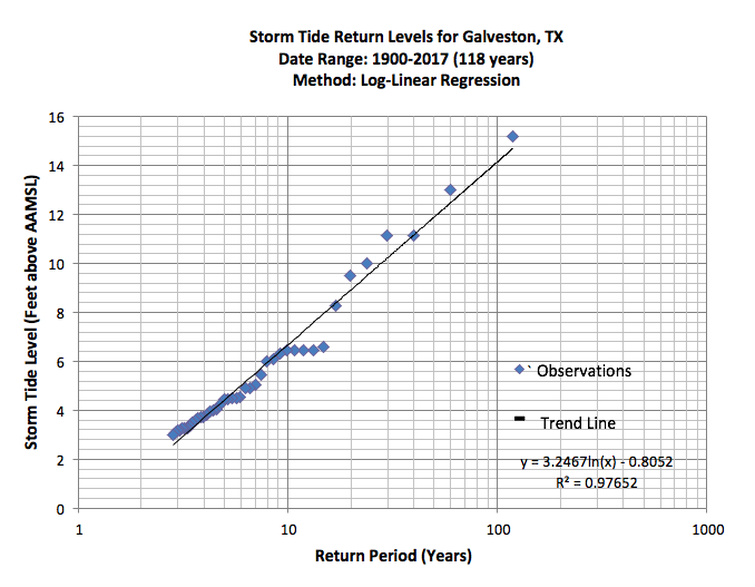
Tropical cyclone tracks and characteristics
Can we use models to create a longer “synthetic” record?

Bloemendaal et al. (2020)
Wind and rainfall fields
If we’re going to generate synthetic storms, we need to model the wind and rainfall fields (and other boundary conditions) in order to model the storm surge (using Adcirc, GeoClaw, SFINCS, etc)

Kleiber et al. (2023)
Sea level

What separates the scenarios? To first order:
- How much \(CO_2\) we emit
- How much the climate system warms in response to \(CO_2\) (climate sensitivity)
- Ice sheet response to temperatures
Limitations
Sobel et al. (2023):
Models are incorrectly simulating the equatorial Pacific response to greenhouse gas warming. This implies that projections of regional tropical cyclone activity may be incorrect as well
Lessons learned?
- Historical data
- Measures what we care about
- Sampling uncertainty
- Doesn’t account for future conditions
- Model simulations
- Can account for future conditions
- May be biased or inaccurate
- Model structure uncertainty
Wrapping up
Today
What questions will we answer?
Case study: storm surge
Wrapping up
Some terms to know 😉
- Return period
- Return level
- Monte Carlo
- Synthetic record
- Climate sensitivity
You should also be able to reason about the merits and limitations of different methodologies for estimating the probability distribution of a hazard (more practice incoming!)
Questions?
Friday:
- Bring your laptop, if you have one.
- Create an account at https://github.com/
I will be absent on Friday (visiting Harris County Flood Control District). Yuchen will lead lab 01.